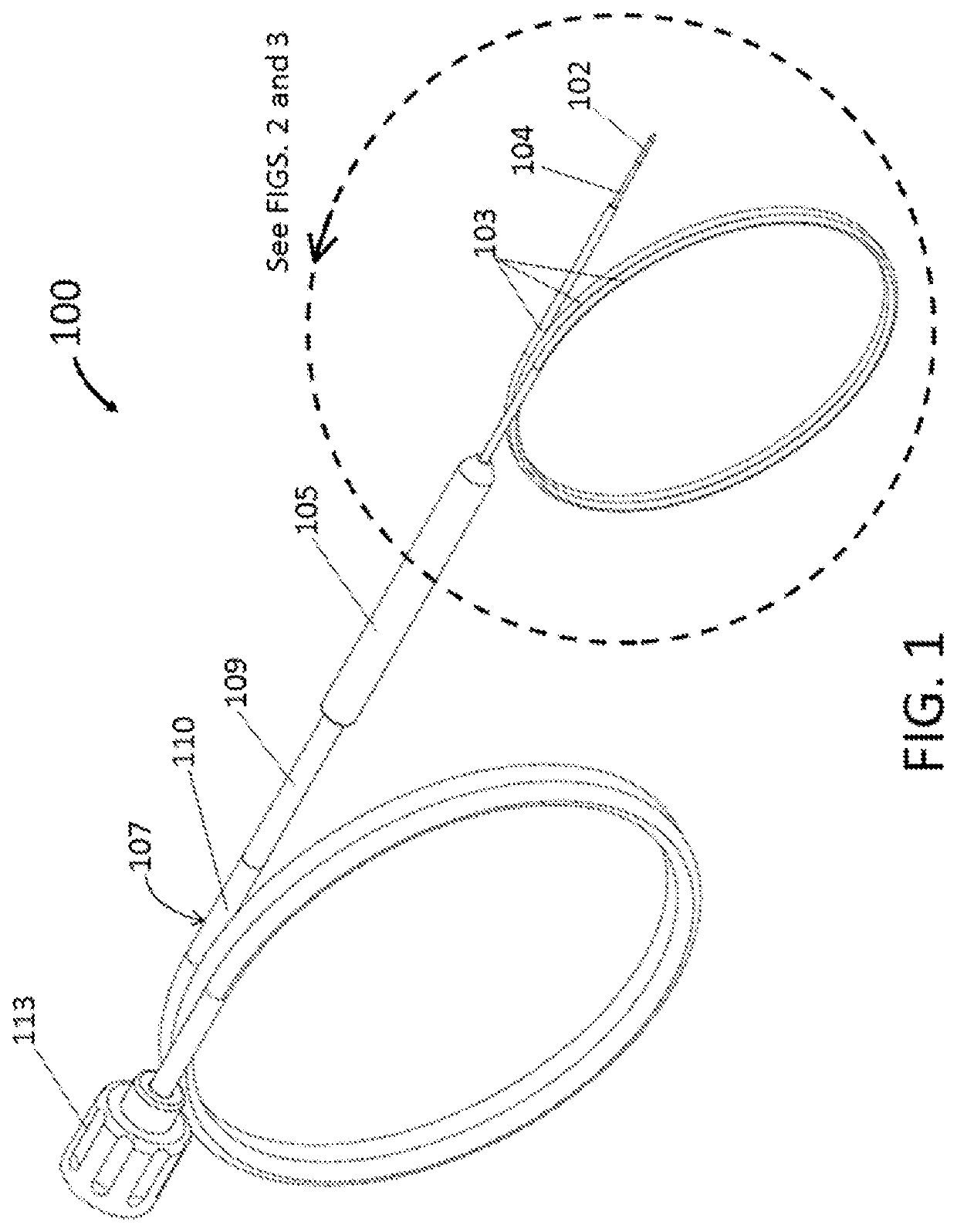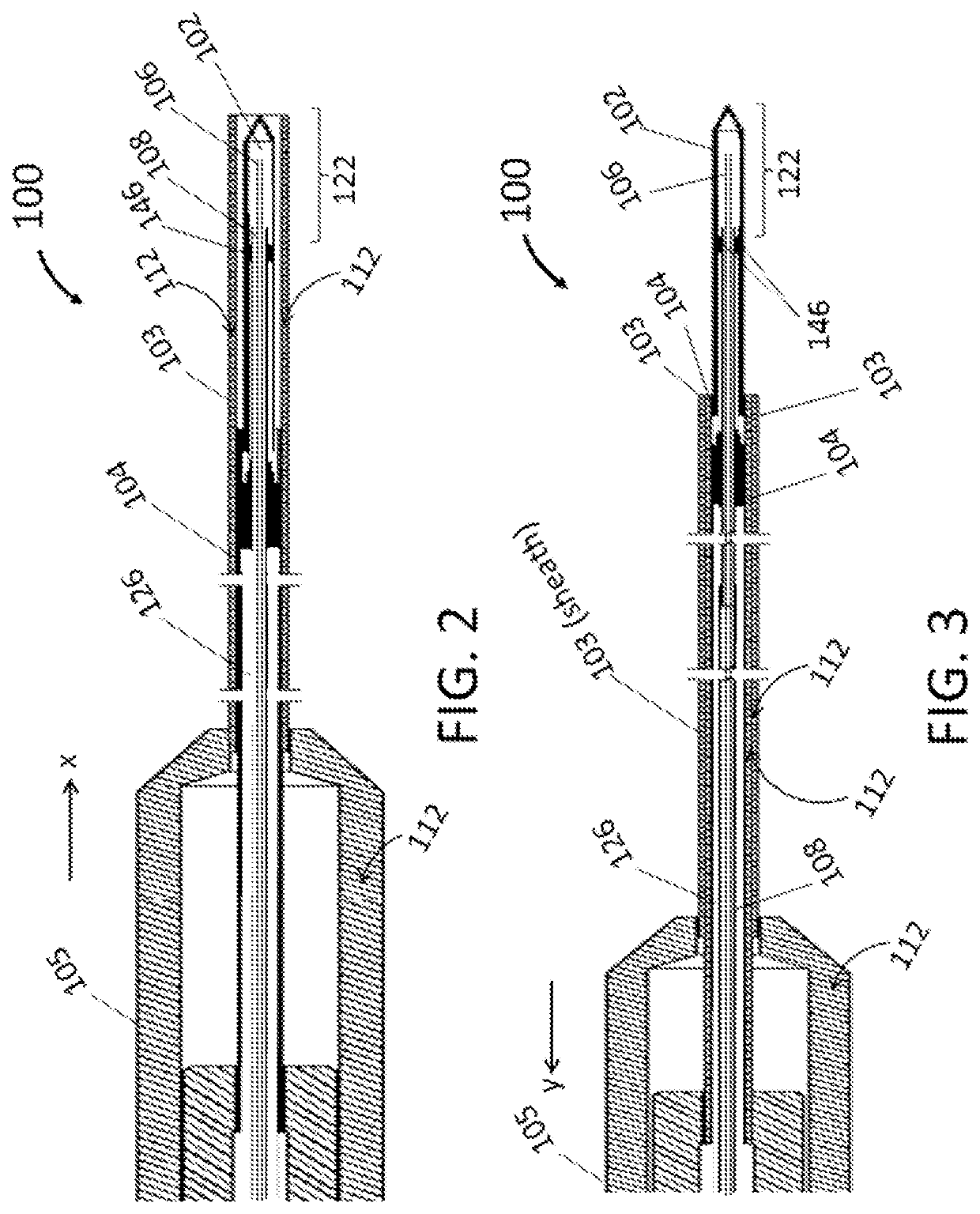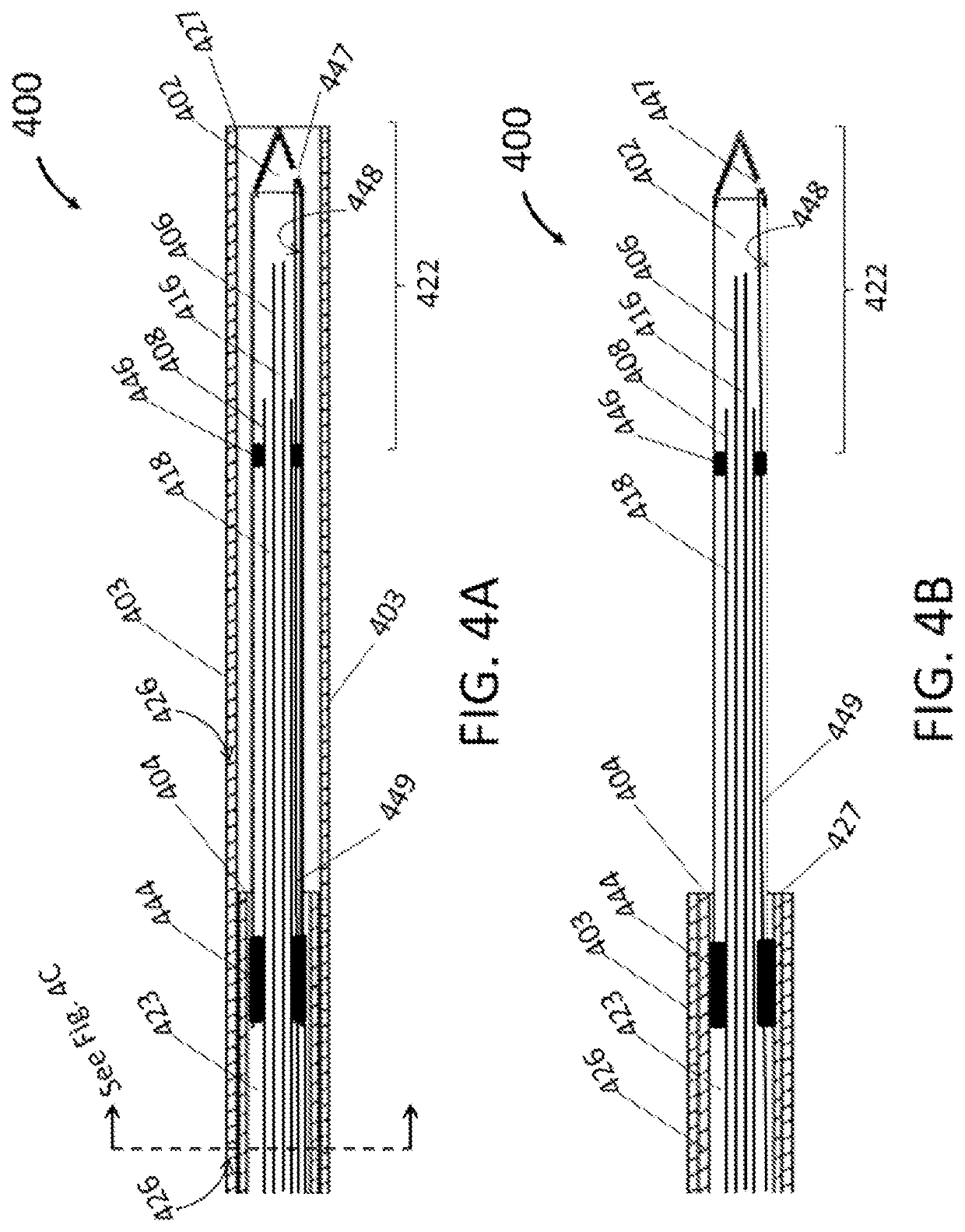Endoscopic cryoablation catheter
a cryoablation catheter and endoscope technology, applied in the field of medical devices, can solve the problems of inability to resection tumors, rfa risks thermal injury to important structures such as the bile duct, the duodenum, and the closure of vessels, and achieve the effect of reducing the overall cost, reducing the risk of complications, and reducing the procedure tim
- Summary
- Abstract
- Description
- Claims
- Application Information
AI Technical Summary
Benefits of technology
Problems solved by technology
Method used
Image
Examples
Embodiment Construction
[0035]Disclosed herein is an endoscopic cryoablation apparatus for the ablation of undesirable tissue. A method of utilizing the endoscopic cryoablation apparatus to treat pancreatic cancer, gastrointestinal cancer, or other such tissue is also incorporated.
[0036]In describing the invention, reference will be made to various embodiments, examples of which are illustrated in the accompanying drawings. Wherever possible, the same or like reference numbers will be used throughout the drawings to refer to the same or like parts.
[0037]A. Cryoablation Catheters Having a Sheath
[0038]As illustrated in FIG. 1, the endoscopic cryoablation apparatus 100 comprises a cryoprobe tip 102 with an ablation zone 122 and integrated with a catheter shaft 104 such that a moveable sheath 103 covers and exposes the cryoprobe tip 102 by way of a controllable handle 105. As depicted, an umbilical 110 has an outer wall 107 and attaches to a connector 113 at a proximal end of the endoscopic cryoablation appara...
PUM
 Login to View More
Login to View More Abstract
Description
Claims
Application Information
 Login to View More
Login to View More - R&D
- Intellectual Property
- Life Sciences
- Materials
- Tech Scout
- Unparalleled Data Quality
- Higher Quality Content
- 60% Fewer Hallucinations
Browse by: Latest US Patents, China's latest patents, Technical Efficacy Thesaurus, Application Domain, Technology Topic, Popular Technical Reports.
© 2025 PatSnap. All rights reserved.Legal|Privacy policy|Modern Slavery Act Transparency Statement|Sitemap|About US| Contact US: help@patsnap.com



